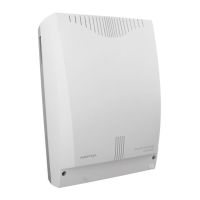Ascotel IntelliGate 2025/2045/2065
Part 2 Call logging (CL) 385
7.6 Output formats
An output format defines which call data is to be output in which format. The fol-
lowing output formats are available:
Formats PC1 to PC5
Used for output on a PC. The PC5 format is the most comprehensive PC format
and is recommended for all systems upgraded with a new PC application for the
acquisition and evaluation of call data. The PC5 format contains ICL and OCL data
(see page 385).
Formats PC1 to PC4 are still supported for PC applications that are already in oper-
ation. However, these formats are not suitable for PINX in a private network.
There is a separate ICL and OCL variant for each of the formats PC1 to PC4 (see
page 412).
Protocol format
This format is used for output on a printer. It does not contain all the data of the
PC formats. There is a separate ICL and OCL variant for the Protocol format (see
page 408).
Individual receipt format
This format is used to print out individual call charges as a receipt. The individual
receipt format is available for OCL only (see page 411).
7.6.1 Structure of the PC5 output format
The PC5 format is used to output incoming and outgoing call data (ICL and OCL)
on
• stand-alone PBXs and
• PINX in private networks.
It is the most comprehensive PC format and is generally recommended when
upgrading with a new PC application for the acquisition and evaluation of call
data.
The data is output in ASCII format in data fields. The data fields have a fixed field
length. All the data fields together form a data record. The data record begins

